That simple question has a complex answer: Yes, no, and maybe. It’s a topic I explored in a recent Green Deane Newsletter and the basis for this article.
Strictly speaking we eat a lot of grass, but in the form of grain: Wheat, rice, rye, barley, millet, sprouts et cetera. What most folks want to know is can you eat the culms and blades (stems and leaves.) What you just read — culms and blades — is one of the impediments to learning about grasses; it has an argot all its own, a specific vocabulary worse than mushrooms. More so, often with grass key identifying characteristics can only be seen with a microscope. In fact I attended a grass seminar a few months ago in which the lecturing professor said if you want guaranteed employment become a grass taxonomist. He said they are very rare and very well paid.
As for humans eating grass, we are not multi-gastric (or in theory large-gutted). We aren’t designed to break down the cellulose in grass to get out the nutriments. Cows have a four-chambered stomach for that purpose, horses have a huge large intestine, even the gorilla has a gut that can accommodate large amounts of vegetation. Humans don’t. However, what we can do is dry the grass, grind it into a powder and use it as a bulking agent in food, such as breads, soups and stews. We don’t get much nutrition from grass prepared that way but it does add to the sensation of satiety and reduces hunger. But there are even issues with that, such as how often. There is also the problem of cyanide.
I have read and been told by those with Ph.D. after their name that all North American grasses are non-toxic. Many imported grasses, however, do have cyanide in some kind of chemical bond such as with hydrogen or sugar that gets separated on digestion. At the most basic level that means one has to know if the grass is native or not which also requires identification, and I’ve already mentioned grasses are a pain in the .. ah.. grass to identify. And while “natives” might not be toxic there are many grasses that seem to have very little edible value. The Andropogons come to mind which don’t seem to have any use beyond making crude brooms. As for common toxic non-natives Johnson Grass, a sorghum, is a good bad example. The large blades can be full of cyanide, depending upon the weather. Crowfoot Grass is another. We eat the grain of Crowfoot Grass only after the plant has turned brown and the dry seeds are easily picked. Complicating the issue is that quite a few toxic grasses from Africa and Asia are naturalized in North America. Prime grain ones to look for are Sand Spurs, Barnyard Grass, and Panicums. Clover is not included here in that it is not a grass but in the pea family. Locally there is also sugar cane (non-native and native.) Sugar cane is easy to grow in warm areas but only for sugar which are empty calories but more energy than just the blades. Related native species are very fibrous and very low on sugar. Similar looking to sugar cane is Arundo donax , a controversial and wild-spread invasive in many areas of the United States. I have found only one reference to the plant’s rhizomes as edible (cooked) which makes me suspicious, and it definitely is not native, another reason to be cautious. While Arundo donax leaves and shoots are listed as edible practical experience says they are not.
And now if you will permit, let me reminisce. I recently bought another book for my foraging library, A Guide to Florida Grasses, by Walter Kingsley Taylor, not the first book in my collection from this august author. I will say more about the book in newsletters to come. I spent an afternoon browsing through the guide and noted his entry on Timothy Grass. The picture alone erased more than 50 years and took me back to summers as a boy in Maine. That’s when I was impressed into service to harvest hay for our horses, most of it Timothy, Phleum pratense, a grass originally from Europe. Because of its high protein content and low dust factor it is preferred by horses. It is also good food for small rodents like Guinea Pigs, Chinchillas, as well as rabbits. We “hayed” every summer for some 20 years usually putting ten to 15 tons of loose hay into the barn. There is some irony in that most of the hay we got every year came from the Hayward Farm.
The main machine for cutting this hay was a horse-drawn sickle mower. Instead of two horses the tongue was extended four feet and was pulled by a stripped-down WWII Jeep, which I got to drive. As soon as I was old enough to reach the pedals I drove and dad operated the mower. By the time I was legally old enough to get a driver license I had already driven thousands of miles in hayfields and across country roads. Most of my annual summer “vacation” was spent haying and driving.
The problems of haying became common. The cutter bar would break a tooth, a triangle-shaped replaceable cutting edge held on by rivets, which we replaced red hot from our own forge. At least once a season, more depending upon how thick the grass was, the piston arm would break, as it was intended to do. It was a piece of ash, called a pitman — the tan wood in the picture lower right — that pushed the mower blade back and fourth being moved by gears turned by the wheels of the mower. It translated forward mower movement into horizontal sickle blade movement. When stresses got too much the wooden piston would break saving the rest of the machine from damage. Two other problems were common.
Often the cut hay would wrap around each of the Jeep’s drive shafts, build up like a wad of cotton candy, get hot and catch on fire, not far from the gas tank. This required quick stopping, crawling under the hot vehicle, putting out the fire, then removing the tightly wound hay, often, ironically, with a blow torch. The other issue, beside unpredicted rain, was ground hornets. The Jeep, pulling the mower, would run over a ground hornets’ nest — at least one per field. They were never pleased about that. The hornets would instantly swarm under the Jeep, then emerge between the back of the jeep and the mower where they would find both of us and attack. It was an excuse to change gears and drive like hell… It must have been much worse when the mower was pulled by horses.
In places where the terrain was too wet or hilly my step-father, who was built like a heavy-weight boxer and did box, would take out a scythe and cut it by hand. He had two grim reaper scythes. One with a long thin blade for hay and one with a short thick blade for brush. Once the hay was cut and sun dried we would winnow it with a Jeep-adapted horse-drawn rake. Then it was loaded loose onto a hay wagon I would drive home. The hay was lifted into the barn by a rope-operated hay fork pulled by the Jeep which my mother drove. My job on those oh-so-hot summer nights was to go up in the high rafters of the barn with 100 pounds of salt for each ton of hay. As each forkful of hay was dumped into the barn I salted it to absorb any moisture thus preventing it from rotting, getting hot and starting a fire. And then throughout the winter I had to shovel and cart the …recycled… hay to the manure pile. No wonder I was a skinny kid.
And all the time — driving or shoveling — I had a stem of Timothy Grass in my mouth, chewing away enjoying the mild sweetness in the stem. It is a grass I would dry, powder, and use. Being a farm kid and chomping on Timothy was part of the same existence. It’s one grass that I know beyond any doubt. Timothy was unintentionally introduced to North America. In 1711 John Herd found the Eurasian native growing wild along the Piscataqua River near Portsmouth, New Hampshire. He called it “herd grass.” That’s almost clever. He talked it up and it was grown in southern Canada, New England area and New York. In 1720 a Timothy Hanson moved from New England to Baltimore and began to cultivate the seed and sell it. He was the first person in the new world who grew, bagged and sold hay seed. George Washington and Benjamin Franklin were admirers of the grass and Franklin is credited with calling it “Timothy Seed” in a letter dated 16 July, 1747. The name was shortened to Timothy and it stuck. It is found nearly everywhere in North America and even in Greenland though here in Florida it is naturalized only in the Miami area. I sometimes wonder what my youth would have been like — and adulthood — had Messers Herd, Hanson, Washington and Franklin not known good grass when they saw and tasted it.
 While there is no shortage of people on the internet who say grass is edible and nutritious — one Indian claims to only eat grass — the Irish Potato Famine of 1845-49 shows otherwise. Folks were reduced to eating grass yet they died, often with grass stains still on their mouth. Another problem with a grass is that it contains a lot of silica, which wears down teeth. Silica is also not good for our digestive track with a history of causing oesophageal cancer. There is some molecular evidence that our very distant ancestors ate grass, or things that ate grass. It’s a debate but those who study the topic say humans did not begin to advance greatly until they good access to protein, meaning meat. These days grain, the other part of grass, is accused of contributing to bad health and obesity particularly in America.
While there is no shortage of people on the internet who say grass is edible and nutritious — one Indian claims to only eat grass — the Irish Potato Famine of 1845-49 shows otherwise. Folks were reduced to eating grass yet they died, often with grass stains still on their mouth. Another problem with a grass is that it contains a lot of silica, which wears down teeth. Silica is also not good for our digestive track with a history of causing oesophageal cancer. There is some molecular evidence that our very distant ancestors ate grass, or things that ate grass. It’s a debate but those who study the topic say humans did not begin to advance greatly until they good access to protein, meaning meat. These days grain, the other part of grass, is accused of contributing to bad health and obesity particularly in America.
All that said grass blades can be dried and turned into powder to add to flour as an extender, or meat oaf or soups as filler that increases satiation. And the green color does provide chlorophyl which is at the center of the magnesium molecule. Magnesium is necessary for good health so even though grass blades and stems might not have a lot of calories they do have at least one chemical we need for good health.
Lastly, in the for-what-it-worth department, in Japan men who are not the expected Alpha Male type are called soushoku danshi—literally translated — “grass-eating boys.” If you sprout wheat grass you might want to be careful just who you tell.
So, are grasses edible? As I said, yes, no, and maybe.

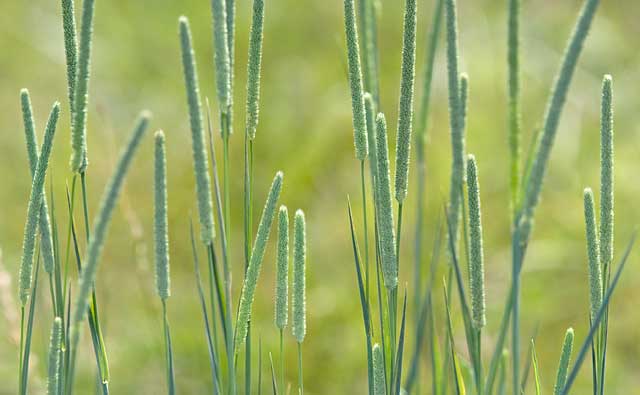
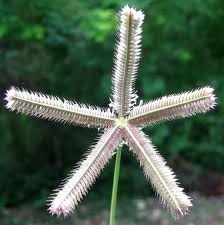
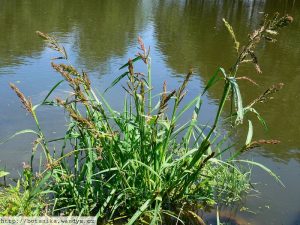
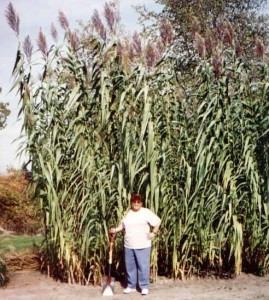
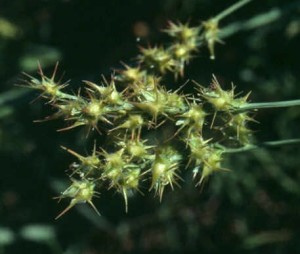

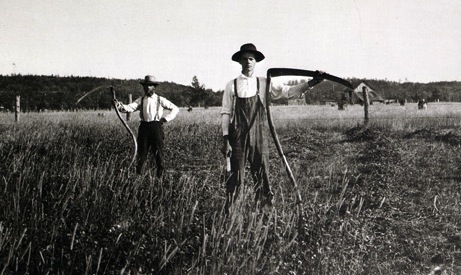


It’s just a wild guess, but given the changes for the good that many foods undergo when wild fermented, like soy, cabbage, milk, onions, sourdough bread and cucumbers, is it possible that there is a fermented grass product that is good for you?
Also, I wouldn’t be afraid so much of bio-available cyanide as the supposed danger “health scientists” are saying. It has been shown that the form of cyanide in apple seeds, bitter almonds, cherry pits, peach pits, apricot pits, etc. only seek out and kill cancer cells, with no damage to healthy cells whatsoever, when taken in reasonable, medicinal amounts. Worth looking into. Searching for G. Edward Griffith, “Vitamin B17” and laetrile would be a good start.
As I am a forager not an herbalist my job is to tell folks of the potential problems. The possible medicinal benefits I leave to others.
Its kinda like being interested in eating sand ,, or sawdust O.o …. There is virtually zero nutrition in the leafy parts of grasses that is why the animals that eat it need to eat so much of it …. SOOOO ,, why want to eat grass ?? O.o There are plenty of other options as far as things to eat …. How about stinging nettles ,, they are good eating apparently … O.o
That is, not much nutrients with respect to amount of indigestible fiber, but juicing grass breaks can separate much of the indigestible fiber from the remaining nutrients. Not saying to go out and juice your lawn clippings, Im not quite ready to do that. but what if there were not any major issues with your type of grass? It’s free.
Grass is plentiful and free, if you can eat it safely and it has some nutrition (“virtually zero” means “not zero”), it makes perfect sense to ask if you can process it into something more nutritionally dense.
It would be good to know what kind of cyanide is in the grass and how much. The cyanide compounds in the pits of plums/apricots/cherries/etc are supposedly very unstable and will break down if you mash the pits, soak them and dry them (as Thomas J Elpel describes in his Primitive Living book). And I’ve eaten my share of apple cores and not died yet.
I have written about this extensively. In theory it takes about a cup of apple seeds consumed at one time to approach the lethal dose.
Please don’t resort to cyanide sources as a cancer cure. Cyanide kills cancer because it kills cells; it does not discriminate.
Please take a look at https://www.youtube.com/watch?v=TU3zBDyvO5I&t=714s
Would juicing edible wild grasses be an acceptable and safe way to consume them in limited quantities?
Hmmmm… your choice of words confound me slightly. Small amounts safe? Probably. Acceptable? I’m not quite sure how that would apply. However… if there is little nutrition in grass blases et cetera, and the reason to consume them is for the bulk they add, the satiation factor, then juicing which breaks them down — as it does most fibre — would seem to be the opposie of what one wants.Whole blades can’t be digested, and juiced into miniscule bits might not do much either. Powder might be the goldilocks size.
Hi, I am new to this site so you may have already covered this, but I heard that pine pollen is good for you to eat. Is that true? If so how would someone fix it? I know most people say pine needles can be used for a tea, but was informed it was only certain pine needles. Is there a difference? How do I tell?
My article on pines should help:
https://www.eattheweeds.com/pines-not-just-for-breakfast-anymore-2/
Though I can’t speak to the health aspects of eating grass for humans, my understanding is that new spring grass has the highest protein content. Horse owners are advised to limit access at that time of year, lest their animals founder.
After drinking my share of wheatgrass, I woke up and said, “Why am I doing this?” It is the worst tasting stuff ever. The smell of a cut lawn is not something you want to eat. Good for you? I have since come to believe that it is not a miracle food. Ann Wigmore was off her rocker.
First off Green Deane, I want to thank you for your commitment to your blog and also for sharing your great wealth of knowledge that, more often than not, goes well beyond the ITEMizing of plants. But I would like to share a quick story about the first time i ate wheat grass. I was in college and had become aquatinted with a nomadic man who showed me his usual tent site and pointed out to me a small patch of wheat grass he had planted. He then cut a handful of the grass and handed it to me, instructing me to chew the juice out until it was a dry pulp and then to toss the remaining fiber. I have, to this day, only “juiced”my wheat grass in this way. To be honest, it is a bit awkward to start chewing a mouthful of grass in the beginning, feeling a bit like a ruminant, but the experience soon gets better when the grass starts to juice. In addition, I actually prefer this method of juicing because it does not give you a full concentration of the juice that can sometimes be i bit overwhelming. Do you think this method would work well enough for other types of grass? Or do you still run into some of the issues presented in your blog entry above? Thanks Nick
As long as the grass has no cyanide I would think chewing grass for the juice is fine then spitting out the fiber … I certainly did that with Timothy.
Bamboo, as I see you’ve already written about, is botanically just another grass, and its young shoots are both edible and nutritious. There are somewhere between one and four native North American species of bamboo, although the larger Asian species are the ones most commonly eaten, and their larger size surely makes them much more efficient to prepare. I wonder if shoots from the native species are or were ever eaten. And I wonder if more “regular” grasses could yield nutritious young shoots if their smaller size didn’t make harvest and preparation impossibly inefficient.
I have had success with pulling up small bamboo shoots on the edge of a bamboo grove, peeling the tough outer layers, and eating the core. I also enjoy doing the same with smaller wild grasses (again, you have to be careful it is not one of the toxic species). With smaller grasses, you pull up the central stalk (before it gets too tall and tough), peel the outer layers, and enjoy the soft white core. Some grasses work better than others for this!
Someone mentioned making “wheatgrass juice” with wild grasses. Here in the Caribbean, it is actually a common beverage called “chlorophyl” and it is valued for its. Locals talk about how it increases platelet counts in the blood, and of course is full of vitamins and gives you an energy boost. I make it almost on a daily basis. I just go out and pick the youngest, most vibrant looking grass nearby, cut it into smaller pieces with a scissors, blend it in a blender with water, strain, and add lime and/or honey to taste. It tastes so much better than wheatgrass juice and it is something you could serve to anybody, even kids! (with a little extra honey of course!)
I live in Japan. Here the bamboo shoots are left in rice bran for a period of time to detoxify them. You can’t eat them unless you do so.
I live in Thailand. Many of the bamboo shoots here have a form of cyanide called cyanogenic glycosides. Of the many species of bamboo here, only a few are actually eaten by humans.
They must be boiled in a slightly salty water to dissolve the cyanide. The water is poured off.
Deane: An evocation of a pleasant memory. I owned a farm for 15 years, and several fields were planted with Timothy. A sweet stalk provided sweet tastes in July and August.
I live in SC and I take a scissors and cut the grass on my lawn and put it it the vita mix juicer…. I add 2 bananas and blend. it tastes really good. the grass is mostly two kinds of grass here in the south. one I think is called Augustine. and some looks just like plain crab grass. it really is for the chlorofyl that people drink it.
I think I have reached the peak of my audacity adopting wheatgrass smoothie into my tonic section for my fibroids (it works!!). Never thought about the Augustine throwing rhizomes across my backyard taking a lot of gas to mow and weedandfeed to keep can be eaten! Wow! And it tastes sweet – you said? It would remain a hideous thought that I would taste what I mowed.
oh, I forgot, I also add water to blend up the grass in the vita mix.
@Judy Eastwood Ann Wigmore cured herself of bowel cancer. and she devoted her life to curing people from cancer. she had the wheat grass analized by a chemist and they discovered an ingredient in wheat grass that kill cancer cells. I used to drink it myself but I couldn’t stand the taste but if I were to drink it now I would add bananas or something sweet to take away the bitterness. her grandmother was a healer and ann learned all she knew from her grandmother.
Thanks, I figured there must be more to the story.
…sure. And that’s why all cancer centers rely on providing patients with grass instead of medical treatment.
yeah, probably for another place, but you have to realise the medical industry like all industry is for profit, selling cures is bad business, and you can’t patent naturally occurring substances. you realize the fluid used in chemo ‘therapy’ is radioactive right? …radioactive. last time i checked its radioactivity that is leading cause for cancer… but i’m not trying to argue. chlorophyll is a great detoxifier.
I was given several shots of wheatgrass juice in one day. I don’t mind the taste. But the wheat grass was freshly picked and prepared by professional. In fact, it tastes fresh and energizing. Next day when I woke up, my eyes feels kind of cloudy. From documentation it is manifestation of the cleansing power from the juice. And then the cloudiness went away in a couple of days. VitaMix has given out the following recipe which is my all time favorite! Besides, I replace the greens below with Wheatgrass (delicious!!!)
http://blenderlady.com/recipes/
Put Ingredients into your Vitamix in the following order:
1-2 Cups of Green Grapes
1/4 of a large Pineapple or 1/3 of a small Pineapple
One whole large Banana
Half of a small Apple or 1/4 of a large one
2 big hand fulls of Spinach (at a show I add a touch of Kale and Parsley too)
2 cups of Ice
This will make 2-3 LARGE servings or 4-5 smaller (juice glass size) servings.
Blend according to the instructions in my Fruit Juice section (until the icy slushy mixture turns into a smooth liquid). This is a “beginner” Green Smoothie
I am a qualified horticulturist and want to add that grass will begin to break down and loose it’s life force after 6 seconds from picking so collecting grass and adding it to other ingredients in the blender will take more than 6 seconds and cause a fermentation in the grass.
Grass is to be eaten fresh!
Up to 6 inches long is edible, over 6 inches long spit out the pulp after chewing.
Organic grass only!
Research shows that 30 million years ago our ancestors had a diet of up to 60% grasses and sedges. Bamboo is a surviving example, sugar cane, cabbage tree palms, nut grass, lomandra sp., etc
The pollen from grasses is collectable at dawn, roll in grass and be covered in yellow pollen particles which are then eaten and absorbed.
Program your grasses and plants to your own DNA for optimum health.
“The Ringing Cedars” Series explain these ancient DNA sequencing rituals and is well worth a read for anyone reading this topic.
or they ate things that ate grass. either would produce the same results.
Laura, you have given amazingly valuable information! Thank you so much for sharing it. I have also read “The Ringing Cedars.” Now I understand better how nutrients were extracted when Anastasia would “absent-mindedly chew on a blade of grass” or her young son would taste pollen. I have also come to see that one needs significantly less *volume* of food when it’s eaten fresh (just picked), due to the abundance of nutrients and life force in it. Really integrating these principles would help human societies thrive, not just survive.
Dear Green Deane, would you mind identifying the different types of aloe plants. They are great as an addition to smoothies. More importantly, the type called “aloe arborescens” has proven effectiveness as a cure for cancer in a mixture of raw pure honey, aloe and a white distillate. With thanks for your continued information. Educative and entertaining! Catherine
PS there are youtube clips of wild grasses being juiced to add to to more conservative juices, and just as cyanide is the cancer killing factor in Laetrile/apricot kernels, it is quite likely to have the same effect in phytonutrient form in grasses. Dogs certainly use grasses medicinally.
what is the difference between wheatgrass and lawn grass? You make it seem as if the majority of grasses have high amounts of cyanide, however, the opposite is true. Most grasses are not toxic and many mammals survive on it. A person can juice lawn grass just like they juice wheatgrass. Wheatgrass is just juicier. I looked up the nutrients in 1 oz of wheatgrass, it had 8 grams of protein and the vitamins and minerals were off the charts, as in thousands of % higher than what the FDA says we should have. Lawn grass is no different!
If you want to eat lawn grass, have at it but I do not recommend it.
Oh boy. You described the mower experience, and the mower, almost right down to the proverbial T. I was the one who rode on that EXACT mower and had to lift that blade at the turns while my father drove the tractor. He, of course, wouldn’t yet let me drive. (My brothers were still too young and were home with mom.) I was the one who was pelted with grasshoppers, leafhoppers, the occasional bee, several hornets and wasps, and the pollen and dust, and who had to holler for him to stop when the grass jammed in the teeth of the mower. What nostalgia. And I loved the taste of Timothy, as did my kid brothers.
Thanks for writing. You can tell when someone has been there, done that. I suspect when we started mowing I was too light to lift the cutter bar but more than able to drive. About a decade later when we got a tractor with a cutter bar it was like mowing in the Indy 500… it was so much faster and easier… but I, too, spent a lot of hot, sweaty times in the hay fields.
I speculate from a couple weeks of eating grass , I believe it was rye grass and spanish oat which is native here, that a defense mechanism is the intestinal stimulation. The two things in history that pop up in my mind are the irish potato famine and the somalian hunger/famine thing… in the somalian crisis the people supposedly tried to survive off grass. didn’t work to well apparently. Well from my experience I noticed how much it stimulated my bowels. practically instantly. I would imagine this to leave an organism devoid of nutrients. This seems to me very serving to the grass. if the grass could get you to fertilize it caz it made you go so soon it would be very beneficial for it. However, diuretics are very unhealthy in large or continual amounts, as our digestion depends on the time food is in our guts. We all have to be wise and smart about the moisture content in your guts for optimum nutrition. I think it might be the little tiny hairs, or scratchy things that won’t get broken down when blended. So I would say that grass edibility is only wise if you have a way of extracting the liquid without the tiny hairs or silica type things. PLUS I am very curious about what one commenter said about programming our plants to our DNA.. see grass is very fast moving, changing, adaptable and surviving. I think we have a lot to learn from them, but I must share a notion I have been observing lately… which is : there is something to explore about which plants “have stuff to give” , and which plants “are surviving for themselves”, fending off other herbivores, or taking from the herbivores. for example, oxalic & phytic acid bearing plants vs. nut bearing tree’s vs. vegetables. a Do plants want to be eaten? or do they just accept it and use it to their advantage ?
Plants are successful by products of stress and environmental conditions. A plant that gets its seeds distributed has a better chance of existing than one that does not. Some plants are successful by having certain animals doing the distributing (birds) for example but not others (mammals for example.) While one might argue that grass wants man to spread around its seeds grass does not want man grinding it up and destroying it completely by digestion. Grass includes some chemical that are not good for us to prevent us from grinding it up fostering the seeds passage through out system whole. This is one argument against eating grass seeds et ali.
If I recall correctly, the Wigmore therapy called for fermenting wheat seeds and drinking the resulting liquid, not actually eating or drinking wheatgrass that was grown from the seed and blended into liquid.
Thank you for this informative article not overlooking your fine wit and charm!
Bless you, I truly enjoyed this fine read.
My husband came from a very similar background with many similar experiences that he reminisces about,
(one being playing hide and seek in the two story hayloft with you as a kid 🙂 ), and he is rarely without a grass stem in his mouth when outside.
Thanks for sharing your experiences, Dean, and thanks for being green! The world needs more like you to teach us how to forage.
Thank you 🙂 !
This article is sooooooo helpful to me, and then the discussion afterwards 🙂 !
I’m taking notes for further linking and research into my backyard pasture 🙂 !
-Irene.
I can not tolerate the straight juice from wheat grass, neither the smell. I tried cutting the wheat grass into itty bitty pieces the size of two letters in this print, ex: tt, then I sprinkle those on my salad, in soup, or in my hot dish. I don’t have to worry about chewing the fiber (too small) as I want that to help bulk my stools. I’ve read in my Vitamin book, “the amount of nutrients needed a day would fit on the head of a stick pin.” That to me is a very minuute amount. But would make complete sense when we eat so much. Or we would be nutrient massed. I can handle the cut up wheat grass with no problem. There seems to be no over bearing taste. If my body is extracting any nutrients from those cut up itty bitty pieces it should be sufficient for what a person needs, wouldn’t you think? If a disease lurks and is causing a problem, I can see how a 2 oz wheat grass juice can give it a punch! But for the most part we need more fiber to pull out those fats and toxins in our intestines which are collecting in our arteries. What good is it to over tax our blood with hyper nutrients when our intestines are screaming for help? Didn’t God create the grasses with the fiber so we wouldn’t over do a good thing?
That’s really interesting and just what I was thinking only today. Do you know for sure that is just as good? Surely by eating the same quantity, cut into little bits instead of juicing that must give us the same qualities? Am I correct in thinking that? Would really appreciate some advice. Thanks ( am new to all this)
I am not a fan of juicing but I don’t see as being much difference, perhaps save for texture. Drying and powdering might give it a better mouth feel.
I ate grass and got skinny
So I have a few questions …. Other than wheat grass, (I do grow and juice that) I really want to know if there is a another grass variety to grow and juice. Could you buy Timothy seed and grow it in trays for juicing as well? I am new to growing wheat grass. I find it strange that of all the grasses that exist wheat grass is the only one I know of that people grow and juice. Do you have any in site as to why that is? I am just chomping at the bit to know why just wheat grass????
I suspect wheat got the nod because it is common and familiar. Personally I prefer sprouts of the brassica family, far more nutritious.
So is grass just good for chewing not swalowing just getting the juices and neutrients out
Chewing doesn’t add much in the terms of calories but the green color is good for us.
look up can chlorophyll be digested since they say the grasses cannot be. Found chlorophyll cannot either but dies something else in the the intestine which is where the grasses come in, but can get same chlorophyll from sprouts,
In a survival situation which grass types are the best to eat? Can you eat grass raw or does it have to be cooked? I am writing a Edible and Holistic Survival guide and I am trying to capture most if not all of the edibles. Aby help would be greatful appreciated
A quick answer is none. We are not designed to eat grass. If you are referring to grain, that’s been covered in several articles. Read Finding Caloric Staples and Wild Flours. There is magnesium in the plant’s chlorophyl but grass is difficult for humans to digest. There are better things to eat in a survival situation.
I live in South America and here the people eat mostly starch and very little veggies. When I moved here from the states I had great health from eating a lot of organic veggies and such. Over time my adopted new diet gave me the same deficiency health problems the locals have such as tooth and joint problems. We have an organic farm and I noticed the animals when they got sick from a commercial grain based diet, escaped their area so as to eat certain plants. I found that the chickens love the same plants that we do in the garden. I also noticed that all the chickens love eating our lawn grass. When they were deprived of the grass they were always sick and since we now let them graze they are now healthy and strong. My intuition kept telling me to try juicing the same grass so I finally grabbed a fist full and threw it into the blender. It is a deep green, tender yet hearty variety much like Zoysia. It blended well with little noticeable fiber and no discernible flavor. The first day I noticed a surge of energy but had loose stools which I attributed to detox. I have been taking it twice daily in fruit smoothies with local raw milk and have been experiencing an overall healing with aches, pains, a 20 year chronic skin fungal infection and tooth problems all gone. Grass might not have much nutrition, yet the largest mammals such as cows and horses seem to do just fine on it. I always remember my grandfather who was a dairy farmer, telling me; “son if you want to be as strong as a cow, you need to eat like one.” As Tesla said, we need to live by intuition, and mine tells me that correctly processed grasses can serve as a healthy food supplement for humans providing much needed silica, magnesium, vitamin K and a long list of other nutients. Perhaps this could be the future “simple green” for humanity. It’s free.
I humbly present to you the majestic Bull: a symbol of power and strength–powered by grass! It never ceases to amaze me how an animal this powerful can develop from grass.
To those who say, “a bull has four stomachs!”
That’s why we humans COOK our food. Simmer the wheat grass in stock for an hour; this does the work of stomach 1, 2, and 3 of our bull.
I’ve had good success as follows: chiffonade and add to a slow-cooked oatmeal. Top with spices, and perhaps a bit of parmesan.
Is Timothy Grass safe for humans? May I know more about its contents? We are currently conducting our research study about timothy grass used in washing utensils/plates and we want to know if it is safe.
Is fermented barley seed juice, in moderate quantities, okay?
Hi, How do you ID Timothy, I was given a piece of grass, and was told it is Timothy, but would like to know for sure.
I eat grass from my yard about twice a week while sunbathing. The trick is to eat one blade at a time and only pick the new growth with curved top 2-4 inches long. It’s sweet and taste like a wheatgrass shot. If it’s a grass not suitable for consumption it will taste accordingly. IMO
Johnson grass: rhizomes seem like the obvious target.. Are the rhizomes eatable? Can they be dug and cleaned easily? In Ethiopia where sorghum grows to 7 feet tall, the stems can be squeezed for sap like sugar cane. Is that a possibility for mature Johnson grass?? Rhizomes seem the best bet to me.
I decided to experiment by making some lawn clippings into a tea. I packed a sauce pan full of the clippings and simmered them in enough filtered tap water to cover them, then strained the liquid through a coffee filter. Made the house smell great, if nothing else. The tea tasted a little like rooibos, though it might have been better with a little lemon. I’m not sure what kind of grass we have in our yard in southern Alabama, (but to be honest, a good portion of the clippings were probably weeds plantain, betony, that sort of thing). Fortunately, I’ve identified most if not all of the weeds in our yard and knew them to be safe, so I wasn’t really worried if things other than grass were mixed in. I experienced no health complaints that I’m aware of. Not the best herbal tea I’ve had, but good enough that I’d do it again, especially considering it’s free. Worth doing just for the way it makes the house smell. I should also point out that I let the clippings dry out in the sun before I gathered them.
I looked into a grass called fescue growing naturalised in California. I read that most fescue contains an endophytic fungus that causes circulation problems in grazing animals that overindulge in it, and that their resulting poor circulation causes them to overheat or suffer from cold more easily.
I’ve heard of burning grass so the ash can be used as fertilizer. Would this method work with us?
so can you eat grass ? cos l do not no if i can eat grass ?
no or yes
can you eat grass? becoes i eat a lot of grass so i do not no if it is good for me and my sister, what is weat grass and is the rol of the grass good for you?
Is Timothy Grass safe for humans? May I know more about its contents? We are currently conducting our research study about timothy grass used in washing utensils/plates and we want to know if it is safe.
It is the ability to COOK which led to us having bigger brains, not the consumption of meat.
Cooking lead to a smaller gut, but the higher quality of meat protein over plant protein made the brain larger, or so goes on view.
This was really fun to read. When I was a kid, I was often chewing on a stem of timothy, or of other grasses – I didn’t know any of their names. I came here today because I was thinking about harvesting the grain from timothy and some other grasses – it might be easier than planting wheat and trying to outcompete the native grasses. I didn’t expect a whole discussion about eating green timothy, but enjoyed it.
But what about the *roots* of the grass though? They don’t feel the same as the blade – maybe the grass roots would have less silica content and would be more digestible?